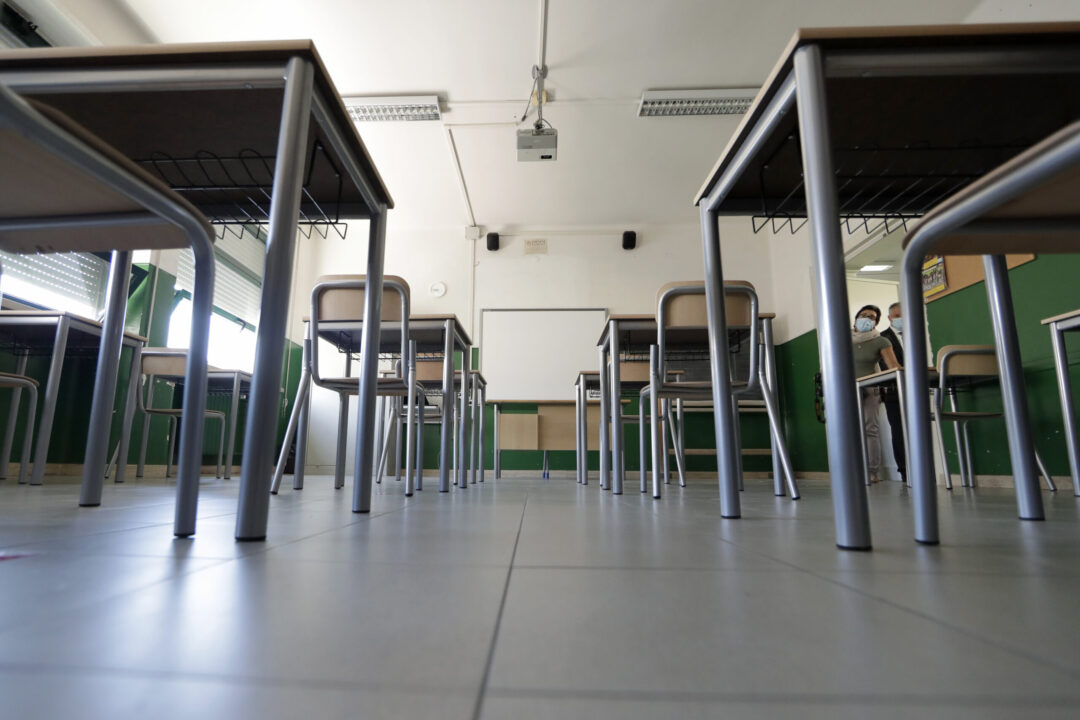Indiana lawmakers still undecided on plan to address chronic student absenteeism
(INDIANA CAPITAL CHRONICLE) — In the final days of the legislative session, Indiana lawmakers are still trying to address the thousands of Hoosier students who are missing multiple days — even weeks — of school each year.
In negotiations is Senate Bill 282, authored by Sen. Stacey Donato, R-Logansport. The latest draft of the proposal, focused on chronic absenteeism, requires school districts to prohibit habitually truant elementary students — those who have 10 or more unexcused absences — from participating in extracurricular activities.
Under the bill, school officials must additionally report habitually truant students to prosecutors’ offices. Prosecutors would then have to notify parents that they’ve filed affidavits related to their students’ absenteeism.
The House and Senate approved different drafts of the bill, but the two chambers now have to agree on a final version.
Donato said the “emphasis” of the bill is for children between the ages of six and 10 “who are absent, excessively, to get what they need to get that education.”
How, or if, lawmakers will get the bill across the finish line is still unclear.
“We’re working on some amendments. We are almost there, but at this point … we’re going to continue to do our negotiations,” Donato said in a short conference committee on Wednesday.
Indiana’s absenteeism problem
State lawmakers were adamant to move bills in the 2024 session to help improve student literacy and bolster career readiness. That included the passage of Senate Bill 1, which will require schools to hold back third graders who do not pass the statewide IREAD test as part of a push to improve reading.
Legislative leaders said, too, that ensuring Hoosier kids actually show up to class is part of their priority agenda.
The latest Indiana data shows that about 40% of students statewide missed 10 or more school days last year, and nearly one in five were “chronically absent” for at least 18 days.
Student absences have been on the rise since the onset of the COVID-19 pandemic in Indiana and across the nation. Although Indiana’s latest numbers show slight improvements, absentee rates during the 2022-23 school year were still 8% higher than before the pandemic.
Indiana’s absenteeism problem
State lawmakers were adamant to move bills in the 2024 session to help improve student literacy and bolster career readiness. That included the passage of Senate Bill 1, which will require schools to hold back third graders who do not pass the statewide IREAD test as part of a push to improve reading.
Legislative leaders said, too, that ensuring Hoosier kids actually show up to class is part of their priority agenda.
The latest Indiana data shows that about 40% of students statewide missed 10 or more school days last year, and nearly one in five were “chronically absent” for at least 18 days.
Student absences have been on the rise since the onset of the COVID-19 pandemic in Indiana and across the nation. Although Indiana’s latest numbers show slight improvements, absentee rates during the 2022-23 school year were still 8% higher than before the pandemic.
In the House chamber earlier this week, Rep. Sue Errington, D-Muncie, was concerned the legislation would push children who miss school into the juvenile justice system.
Bill sponsor Rep. Martin Carbaugh, R-Fort Wayne, clarified that the intent is not to “throw the book” at elementary schoolers, but said “we are trying to wake up the parents because they’re kind of at the mercy of their parents.”
Rep. Renee Pack, D-Indianapolis, disagreed that such punitive policies are necessary.
“We don’t have to wake up parents,” Pack said. “They’re awake and they’re taking care of their kids. And they’re doing the best they can.”
The Indiana Code specifically defines chronic absenteeism as being absent 18 or more days within a school year for any reason— a higher standard than “habitual truancy,” which is ten or more days without an excuse.
Under the “compulsory education” laws in Indiana, children must regularly attend school from the time they’re seven years old until they turn 18, with some exceptions.
But unless they’re excused, students who cut class too often could end up under a juvenile court’s supervision. Built-up absences could also prompt prosecutors to file misdemeanor charges against Hoosier parents, given that they are legally responsible for making sure their children go to school.
District officials maintain that chronic absenteeism — which includes excused absences — continues to be a primary issue. Many told lawmakers that the bill should be expanded to include chronically absent students, and not just those who are truant.
“The bill talks about habitual truancy. And yes, that’s an issue. That’s a major issue,” said Tim McRoberts, executive director of the Indiana Association of School Principals. “(Students) are just absent, and they’re chronically absent.”
